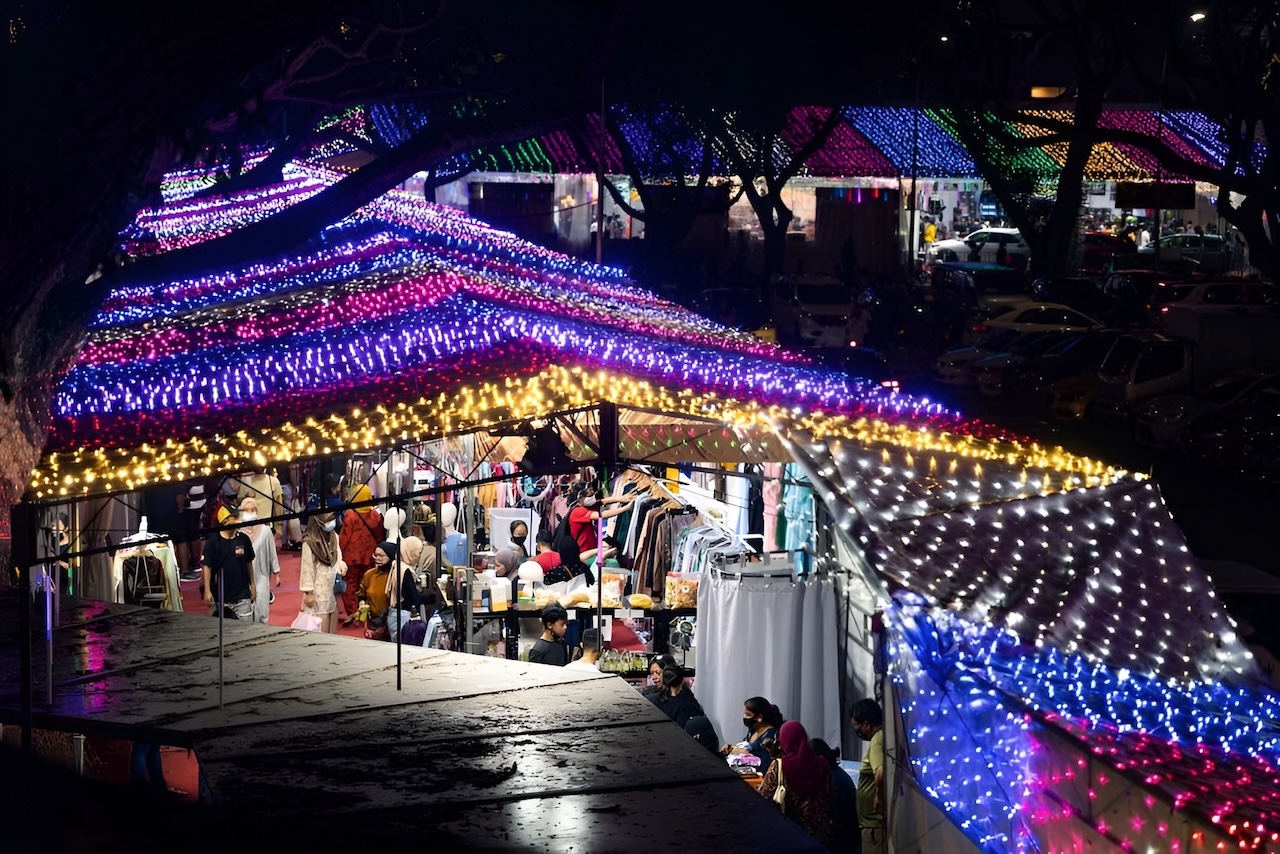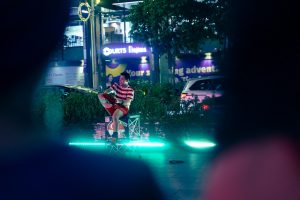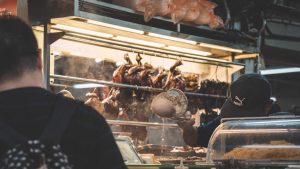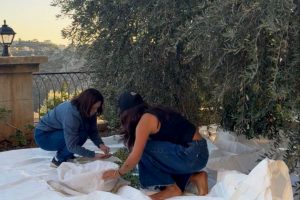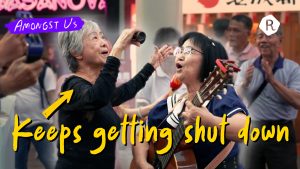Top image: Stephanie Lee / RICE file photo
If all the Hari Raya decorations were stripped away from the Geylang Serai Ramadan Bazaar, would you still recognise the culture it celebrates?
As an annual tapestry of tradition, community and cuisine since the 1970s, Ramadan Bazaars have been going through an existential crisis of sorts. Like an outstretched hand expecting a reverent salam, it’s instead been met with the blunt knuckles of modern reality—a fist bump delivered by social media algorithms and its obsession with eye-catching, over-the-top foods in the 2010s.
These days, Ramadan Bazaars can’t escape the perennial (and tiring) debate of tradition vs evolution. That’s what we get for falling for rainbow bagels, diabetes-flavoured kunafa, and air sirap in containers so big they can qualify as a redrawn SMC.
This is what happens when we expect Ramadan Bazaars to be a social event, an Instagram attraction, a destination experience, and a cultural showcase all rolled into one.
As a lifestyle journalist who’s been covering food galas, tastings, and events for years, I can’t help but wonder: What is the media’s role in turning the Ramadan Bazaar into a playground for viral trends at the expense of its deeper cultural roots?
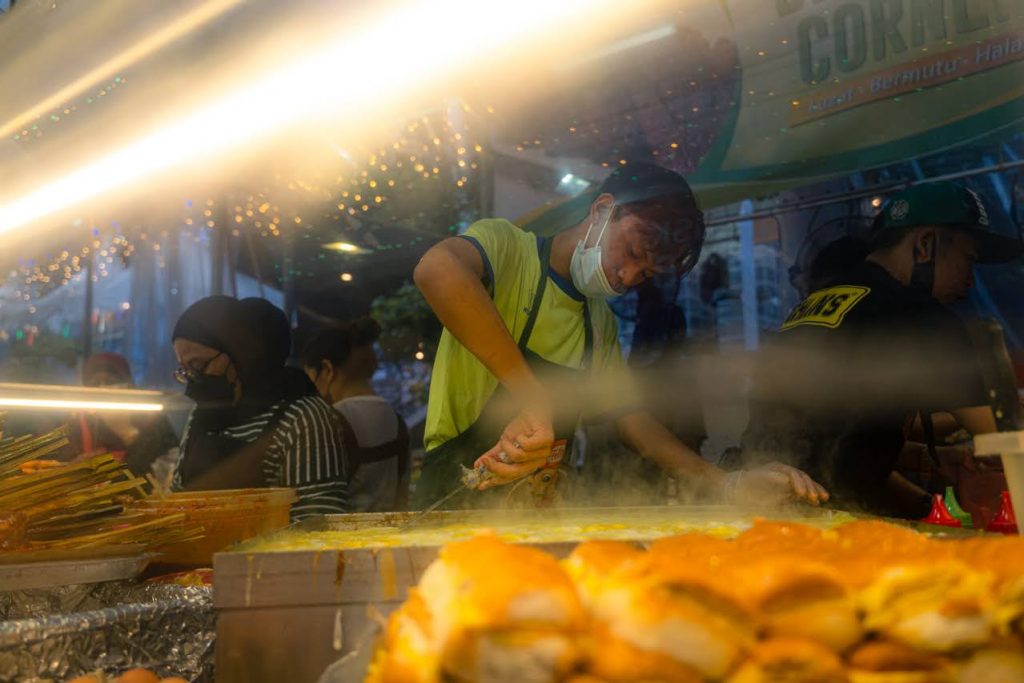
The Algo Eats Another Victim
Let’s set aside the titanic rental costs (up to $19,000? Rabak bro) for a moment. As a longtime stakeholder of the food content circus, I want to talk about what we’re actually serving the masses.
Local media, influencers, and food bloggers aren’t just documenting trends—they’re dictating taste. In the race for clicks and clout, we chase the most photogenic, the most outrageous, the most viral. If your food isn’t glowing in the dark or stretching three feet in the air, does it even exist?
Meanwhile, small businesses and generational hawkers struggle for attention, their kueh and roti boyan eclipsed by technicoloured, lava-spewing, glitter-dusted spectacles.
I feel disdain on behalf of my older Malay peers when I see classics like lovingly prepared mie bakso and banana leaf-wrapped nasi lemak edged out by new-fangled foods like tandoori chicken pasta and Kinder Bueno croissants—stuff that don’t have the remotest link to Malay culture. Truly, I empathise with anyone who longs for the good old days.
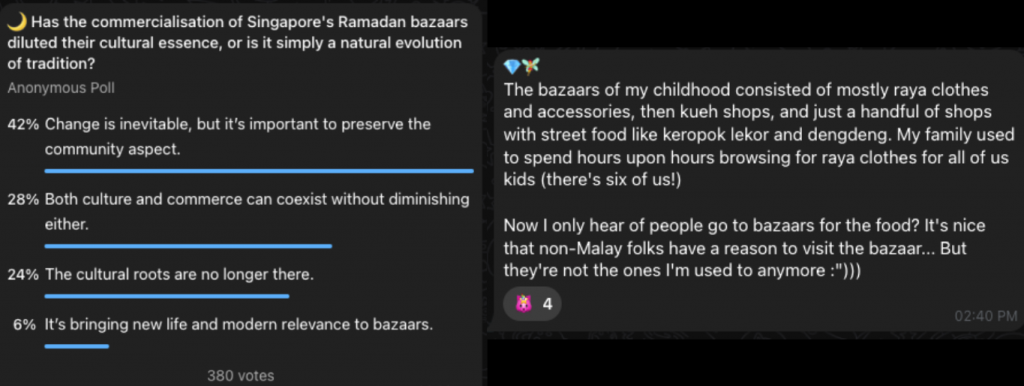
In recent years, traditional food has made a comeback, yes, but barely. And even as traditional food vendors try to inch traditional offerings back into the Ramadan Bazaar—which is the time and place to celebrate Malay-Muslim tradition, mind you—they are unwittingly coerced by commercial forces to endow their sacred family recipes with a scroll-stopping twist. Pisang goreng, but now with mala cream!
I don’t blame sellers either (even if they might want to upsell begedil and pass them off as korokke). Social media attention spans are dismal as it is, and it’s hard enough to attract coverage from the 10,001 local lifestyle content creators who are likely to care more about visual spectacle than culinary authenticity.
Imagine, if you will, a Ramadan bazaar stripped of all the flashy, over-the-top creations—just traditional food, nothing more. The purists among us would cheer, and honestly, there’s merit in seeing it return to its roots: affordable eats for breaking fast, a focus on community, and essentials for Hari Raya Aidilfitri.
But will that mean losing the magic of seeing people from all walks of life—different races, different religions, different nationalities—coming together to soak in the Ramadan spirit?
Let’s be real, though. Given today’s commercial realities, ondeh-ondeh churros and their flashy cousins aren’t going anywhere.
And that’s exactly where the role of content creation comes in. Not just to chase the glitter but to make sure the staples that built these bazaars don’t get lost in the aesthetic spectacle.
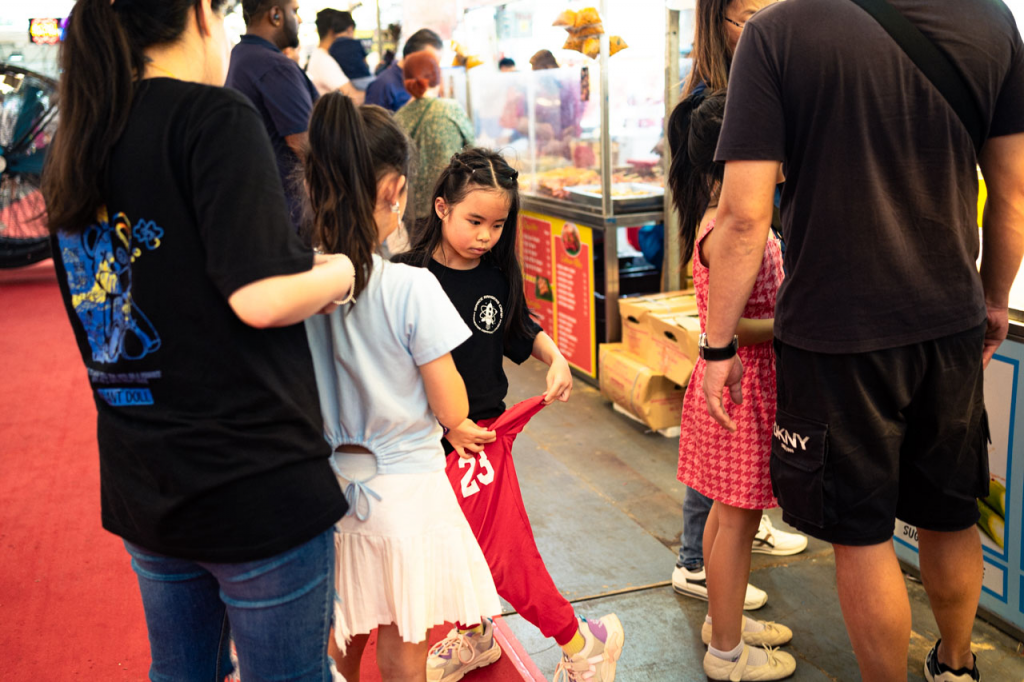
Wake Up and Smell the Dalgona Coffee
As the Ramadan Bazaar continues to bend to the realities of commercialisation, it’s no longer just a religious or cultural event—it’s a full-blown F&B circus. But does our coverage have to follow that script?
We risk diluting the very thing that makes the Ramadan Bazaar special—the cultural essence that goes beyond the food. I can’t help but feel that after years of prioritising trend-driven content over depth, we turn what was once a living, breathing tradition into annual fodder for listicles and TikToks.
But here’s the kicker: Are we doing this because it’s what the people want, or because it’s the easiest way to chase engagement? I’d say it’s both.
It’s easy to say we should go back to the roots of the bazaar and the roots of food journalism, but idealism is hard to sell. Long-form, reflective content rarely gets the love a 30-second reel of a cheese pull does.
But should we let that define our coverage?
The Ramadan Bazaar is an opportunity for Singapore’s Malay-Muslim culture to enter the mainstream spotlight. Deeply-rooted culinary traditions can get a chance to be a timely part of the cultural conversation.
What we often overlook in our quest for clicks is the rich stories behind the food stalls—the generational hawkers who have spent decades perfecting recipes passed down through families, the small businesses for whom this month is a lifeline.
They’re the keepers of culture, not just purveyors of edible spectacle. Yet they often get overshadowed by the latest Instagrammable trend.
Just my two cents: Journalists, influencers, and food bloggers/vloggers have a duty to focus our collective gaze on what truly matters, not just on what’s shiny.
Yes, the food needs to catch our attention, but it should also spark curiosity about the people, the stories, and the values that make the Ramadan Bazaar a reflection of more than just commerce. And if we continue to pick the low-hanging cheese-covered deep-fried fruit for the sake of Likes and Subscribes, there’s the risk of omitting the heritage we ought to appreciate.
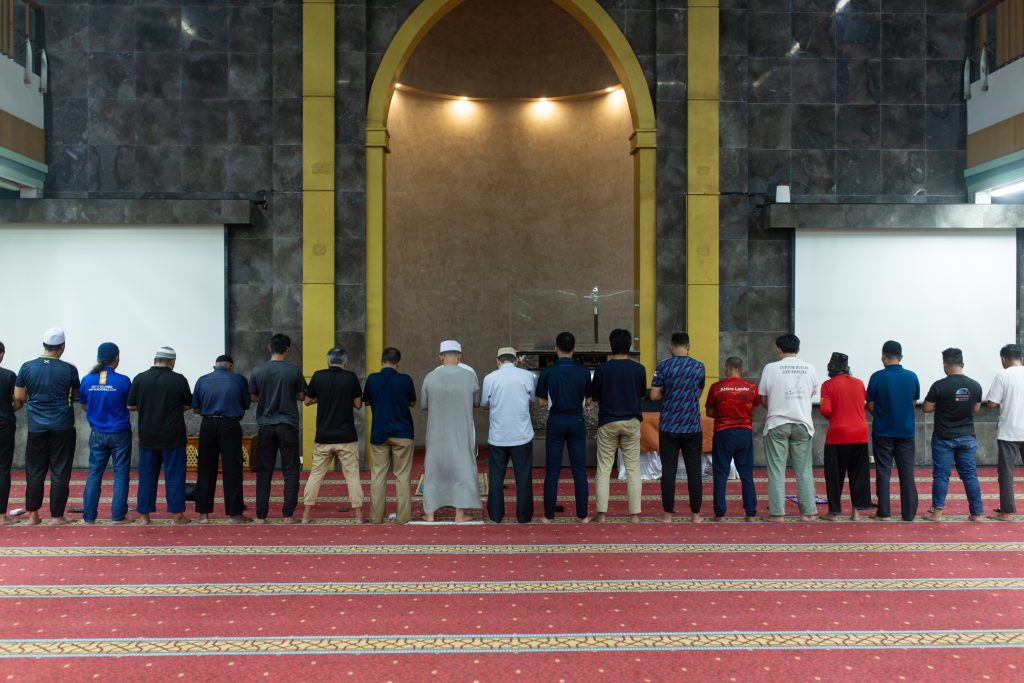
Stories That Feed The Soul
Search ‘Ramadan Bazaar’ on Google or YouTube, and you’ll drown in an ocean of food listicles. I’m not knocking listicles—if they vanished, the digital world might just implode.
And yes, I know how self-righteous this all sounds. But let me be clear: I’m not dissing other content formats and priorities. God knows how hard it is to resist the allure of sensationalism in digital media.
My point here is a call to friends in the industry to stop letting virality dictate the narrative of an important cultural phenomenon. Because we do have the power to shift the conversation, to dig deeper, to focus on things beyond the food porn.
If we do, Ramadan Bazaars could evolve from a parade of viral bites into something richer. The stories of the people behind these markets deserve as much attention as the food.
And when these stories get told well, vendors won’t need to rely on gimmicks; their passion and purpose will speak for themselves, earning the support they deserve to sustain themselves despite the objectively insane rent.
These stories may not always go viral, but they matter. We’ve seen their impact before—how a well-told tale can turn humble street stalls into global destinations, drawing diners from worldwide to markets in Japan, Korea, and Taiwan.
Remember how the stories and vlogs about Fukuoka’s yatai revitalised the city’s tourism industry? Or the Netflix episode that lifted a Korean noodle hawker out of poverty?
I would love to see the local food content landscape fill up with heart-warming narratives about the people who epitomise the heart and soul of these bazaars. Yes, these stories exist, but they’ve taken a backseat to get-to-the-meat listicles and dopamine-inducing reels that reduce the Ramadan Bazaar to just another Night Fest.
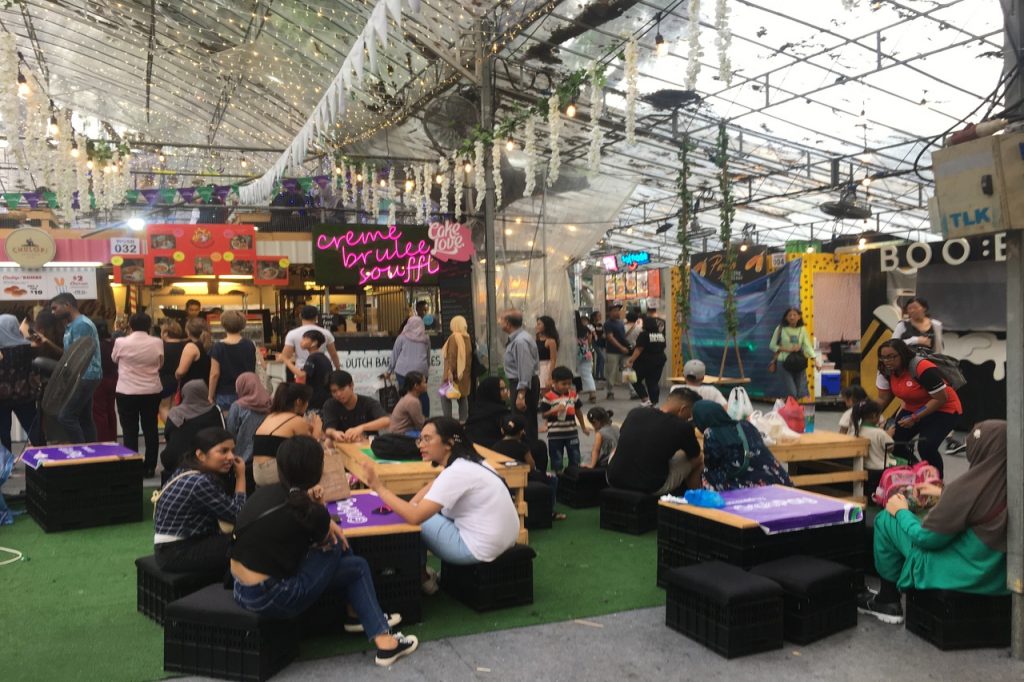
And then comes the inevitable question: Are we overthinking it?
Because, for me, the best bits about Ramadan Bazaars revolve around communal joy—Muslim and non-Muslim friends coming together to soak in the festive Ramadan spirit. Who are we to campaign on how these stories get told, eh?
Maybe the challenge, then, isn’t rejecting the spectacle, but making sure deeper narratives don’t get drowned out in the process. After all, we’re not just here to feed the eyes—we’re here to feed the soul too.

